 May 2, 2019 John E. Ross, KD8IDJ, Editor
| ||||||||||||||||||||||||||||||||||||||||||||||||||
ARRL Reply Comments Stress Need to Update Technician Privileges in a Digital World In reply comments to the FCC (comments on comments already filed) on its Petition for Rule Making (RM-11828), ARRL has stressed that updating HF privileges for the entry-level Technician license "is the sole subject and intent" of the petition. ARRL filed its reply comments on April 29, urging the FCC to disregard comments irrelevant to its petition and maintaining that Technician privileges must be relevant within the context of today's technological environment.
"If adopted, there would be no change to the operating privileges for all license classes other than those of the Technician class," ARRL said. In 2018, ARRL asked the FCC to expand HF privileges for Technician licensees to include limited phone privileges on 75, 40, and 15 meters, plus RTTY and digital mode privileges on 80, 40, and 15 meters. The FCC invited comments on the proposal in April. ARRL pointed out that some comments filed on its petition address subjects related to other open proceedings rather than expanding Technician privileges, citing comments cross-filed in such proceedings as WT Docket 16-239, RM-11708, RM-11759, and RM-11831. "Those filings should be considered in the proceedings that they address, rather than here," ARRL said. ARRL said some opposition appears based on fears of increased interference potential due to additional digital operation by Technicians. "It is improbable that all, or even a majority, of Technician licensees suddenly would develop a passion for the same digital technology," ARRL said. "Our hope and expectation is that many will engage with digital modes on the high-frequency spectrum at issue, but it is unrealistic to suggest that every Technician licensee blessed with new privileges would suddenly appear on the same band."
ARRL further said that comments regarding disagreement on the definition of encryption for masking the content of certain digital transmissions are also "out of place in this proceeding" and "should not delay initiation of a proceeding" proposing to update Technician privileges. "Technology has changed dramatically in the Amateur Radio domain, and ARRL believes the requested Technician license enhancement would foster the regulatory goals for the Amateur Service and continue to increase amateurs' historical experimentation and service in a meaningful way," ARRL concluded. World Scout Jamboree Gearing Up for Significant Amateur Radio Presence Amateur Radio will be a part of this summer's 24th World Scout Jamboree in West Virginia, the first World Jamboree held in North America since 1983. The Jamboree has chosen the theme "Unlock a New World." Thousands of Scouts and Scout leaders from some 200 countries are expected to attend. The Jamboree's Amateur Radio Exhibit will use the call sign NA1WJ -- North America's 1st World Jamboree. It will be on the air during the event, July 22 until August 2, at the Summit Bechtel Reserve, hosted by Canada, Mexico, and the US. Amateur Radio testing is expected to begin as early as July 14. Operating frequencies will be posted in real time via Facebook and Twitter or via an NA1WJ email group.
"We also expect to launch one or two balloons with Amateur Radio payloads and track them as they cross the Atlantic," the vision document continues. Organizers are encouraging radio amateurs around the globe to get on the air during the World Jamboree to help NA1WJ demonstrate Amateur Radio for Jamboree visitors. The 2019 World Scout Jamboree operation at the Summit Bechtel Scout Reserve will take advantage of lessons learned by the K2BSA Amateur Radio operation during the 2013 and 2017 USA National Jamborees. It will also take advantage of the existing infrastructure, which includes three VHF/UHF repeaters installed by Icom America, as well as the utility poles for installing antennas. K2BSA ham gear stored in West Virginia includes antennas, rotators, and cables. Evening operation from NA1WJ will involve at least two operators using the buddy system. VHF/UHF repeaters will offer full coverage of the Jamboree area via handheld transceivers, facilitating networking as well as emergency communication. The exhibit will include an Amateur Radio station with the special event call sign W8J.
Each station will be able to accommodate four participants at a time, plus one control operator. The goal is to give each participant up to about 10 minutes of operating time. The K2BSA Amateur Radio Association will host a "Radio Scouting" booth at Dayton Hamvention® (Booth 2205 in Building 2). Science and Technology: An Ultra-Small Transmitter for VLF? A study, "A high Q piezoelectric resonator as a portable VLF transmitter," by Stanford University SLAC National Accelerator Laboratory researcher Mark A. Kemp et al., in the April 12, 2019, edition of Nature Communications describes using a small rod of lithium niobate and taking advantage of the material's piezoelectric properties to convert an imposed voltage to a mechanical effect, which in turn radiates an electromagnetic current.
"Our device is also hundreds of times more efficient and can transmit data faster than previous devices of comparable size," Kemp, the project's principal investigator. "Its performance pushes the limits of what's technologically possible and puts portable VLF applications, like sending short text messages in challenging situations, within reach."
The paper by Kemp et al. points to the fact that large size and high loss render conventional transmitter techniques inadequate. "We show that a strain-based, piezoelectric transmitter can overcome many of the fundamental limitations of conventional electrically small antennas (ESA)," the paper's abstract reads. "These transmitters can resonate in a very small footprint while exhibiting low losses." Taking a deeper dive: "Traditionally, a disadvantage of passive high-Q antennas was low bandwidth. Utilizing piezoelectricity as the radiating element allows us to dynamically shift the transmitter resonant frequency. Therefore, high total Q (low loss) no longer constrains the system bandwidth. These are our fundamental advancements: Achieving an exceptionally high system Q with no external impedance matching network and an effective fractional bandwidth beyond the passive Bode-Fano limit. Although demonstrated at VLF, this concept straightforwardly scales to other frequency bands." So Now What? Podcast "Finding the Right Club for You" is the focus of the new (May 2) episode of the So Now What? podcast for Amateur Radio newcomers. If you're a newly licensed Amateur Radio operator, chances are you have lots of questions. This biweekly podcast has answers! So Now What? offers insights from those who've been just where you are now. New episodes will be posted every other Thursday, alternating new-episode weeks with the ARRL The Doctor is In podcast.
ARRL Communications Content Producer Michelle Patnode, W3MVP, and ARRL Station Manager Joe Carcia, NJ1Q, co-host the podcast. Presented as a lively conversation, with Patnode representing newer hams and Carcia the veteran operators, the podcast will explore questions that newer hams may have and the issues that keep participants from staying active in the hobby. Some episodes will feature guests to answer questions on specific topic areas. Listeners can find So Now What? on Apple iTunes, Blubrry, Stitcher (free registration required, or browse the site as a guest) and through the free Stitcher app for iOS, Kindle, or Android devices. Episodes will be archived on the ARRL website. ARRL's Free Exam Review for Ham Radio Updated ARRL Exam Review for Ham Radio⢠has been updated in advance of the release of the ninth edition of The ARRL General Class License Manual for Ham Radio. ARRL Exam Review is a free online resource for use with current editions of ARRL License Manuals. The service can be accessed via a web browser, and uses the official examination question pools to construct chapter-by-chapter reviews. Upon completing study, Exam Review helps the license candidate take practice exams with the same number and variety of questions that he or she will encounter on exam day. Practice tests can be taken over and over, scored in complete privacy, or even printed with an answer key. Exam Review includes quick feedback about the questions missed. The update to Exam Review and the new edition General Class License Manual coincides with a new General Class question pool released earlier this year by the National Conference of Volunteer Examiner Coordinators (NCVEC). The new 2019 - 2023 General Class question pool becomes effective on July 1, 2019 for examinations in the Amateur Radio Service. The 2015 - 2019 General Class pool remains in effect for exams given until June 30, 2019. ARRL Exam Review provides access to both the current and new General Class questions. (Read more.) The K7RA Solar Update Tad Cook, K7RA, Seattle, reports: No sunspots were visible over the April 25 - May 1 reporting week, and so the average daily sunspot number dropped to zero after sitting at 8.1 during the previous 7 days. Average daily solar flux declined from 70.6 to 67.5. Geomagnetic indicators were quiet, with average planetary A index at 5.9, up from 4.7 in the previous week.
Predicted planetary A index is 15 and 10 on May 2 - 3; 5 on May 4 - 9; 8 on May 10; 5 on May 11 - 19; 8 on May 20; 5 on May 21 - 26; 10, 14, 12, 8, and 5 on May 27 - 31; 10, 12, and 14 on June 1 - 3; 8 on June 4 - 6, and 5 on June 7 - 15. The New Yorker recently ran an article about aurora borealis tourism. Sunspot numbers for April 25 - May 1, 2019 were 0, 0, 0, 0, 0, 0, and 0, with a mean of 0. The 10.7-centimeter flux was 67.5, 67.2, 66.9, 67.9, 66.9, 68.5, and 67.6, with a mean of 67.5. Estimated planetary A indices were 5, 4, 6, 5, 5, 5, and 11, with a mean of 5.9. Middle latitude A index was 4, 2, 5, 4, 6, 4, and 8, with a mean of 4.7. A comprehensive K7RA Solar Update is posted Fridays on the ARRL website. For more information concerning radio propagation, visit the ARRL Technical Information Service, read "What the Numbers Mean...," and check out K9LA's Propagation Page. A propagation bulletin archive is available. Monthly charts offer propagation projections between the US and a dozen DX locations. Share your reports and observations. Just Ahead in Radiosport
See the ARRL Contest Calendar for more information. For in-depth reporting on Amateur Radio contesting, subscribe to The ARRL Contest Update via your ARRL member profile email preferences. HamSCI, Ham Radio 2.0 to Combine Efforts at Dayton Hamvention 2019 Thanks to support from the Yasme Foundation, the citizen science organization HamSCI and Ham Radio 2.0 will share space and combine efforts at Dayton Hamvention® 2019, which The Ham Radio 2.0 area will serve to host a series of "booth talks" both by HamSCI presenters and presenters with a "2-point-0" perspective on operating and technology that looks to the future of ham radio. Presentations begin at 10 AM on Friday and continue through 3 PM on Saturday.
In addition to the presentations, the Ham Radio 2.0 area will be home HamSCI also will offer the HamSCI Forum Saturday, 9:15 - 10:30 AM (Forum Room 4). Full details are on the HamSCI website. Annual Armed Forces Day Crossband Test Set for May 11 The Army Military Auxiliary Radio System (MARS) will host the traditional military/Amateur Radio communication tests to mark the 68th annual Armed Forces Day (AFD) on Saturday, May 11. The event is open to all radio amateurs. Armed Forces Day is May 18, but the AFD Crossband Military-Amateur Radio event traditionally takes place 1 week earlier in order to avoid conflicting with Dayton Hamvention®. Complete information, including military stations, modes, and frequencies, is available on the US Army MARS website.
During the event, military stations in various locations will transmit on selected military frequencies and announce the specific ham frequencies they are monitoring. Military stations expected to be on the air for the event include those in Arizona, Japan, Hawaii, Okinawa, Washington, DC (and elsewhere in the contiguous states), the USS Midway, the USS Yorktown, the USS Iowa, LST-325, the US Naval Academy in Annapolis, and the Newport Naval Radio Station Museum in Rhode Island. The MARSCOMM and MARSRADIO nationwide networks will have multiple stations on the air across the continental US. An AFD message will be transmitted utilizing the Military Standard (MIL-STD) serial PSK waveform (M110) followed by MIL-STD Wide Shift FSK (850 Hz RTTY), as described in MIL-STD 188-110A/B. Technical information is available. The AFD message will also be sent in CW and RTTY, as indicated on the full schedule. Anyone wanting a QSL should complete the request form on the MARS website. In Brief...
+++
+++
Upcoming ARRL Section, State, and Division Conventions
Find conventions and hamfests in your area.
. .
Subscribe to...
| ||||||||||||||||||||||||||||||||||||||||||||||||||
 "[T]he increasingly rapid pace of change in communications technologies, coupled with the national need for self-training in science, technology, engineering, and math" necessitate the rule changes requested, ARRL asserted. "ARRL made its request because of the gap between today's digital technologies and the privileges accorded the current entry-level Technician license." ARRL characterized its proposal to update the rules as "balanced and modest."
"[T]he increasingly rapid pace of change in communications technologies, coupled with the national need for self-training in science, technology, engineering, and math" necessitate the rule changes requested, ARRL asserted. "ARRL made its request because of the gap between today's digital technologies and the privileges accorded the current entry-level Technician license." ARRL characterized its proposal to update the rules as "balanced and modest."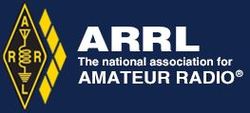 The comments note the development of very efficient digital modes, such as FT8, which occupies just 90 Hz of spectrum per signal. "The experience with FT8 clearly demonstrates the attraction of the digital modes and the spectrum efficiencies that can be achieved," ARRL said. "This is why opening up limited digital opportunities to new radio amateurs so clearly would serve the broad public interest as well as the specific purposes of Amateur Radio in experimentation and innovation, as enumerated in the governing FCC rules."
The comments note the development of very efficient digital modes, such as FT8, which occupies just 90 Hz of spectrum per signal. "The experience with FT8 clearly demonstrates the attraction of the digital modes and the spectrum efficiencies that can be achieved," ARRL said. "This is why opening up limited digital opportunities to new radio amateurs so clearly would serve the broad public interest as well as the specific purposes of Amateur Radio in experimentation and innovation, as enumerated in the governing FCC rules."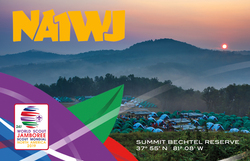 "The goals of the Amateur Radio station at the World Scout Jamboree are to introduce Amateur Radio to Scouts and Scout leaders through hands-on participation in two-way communication with other stations across the globe. This activity will also serve as the Amateur Radio voice of the Jamboree," the
"The goals of the Amateur Radio station at the World Scout Jamboree are to introduce Amateur Radio to Scouts and Scout leaders through hands-on participation in two-way communication with other stations across the globe. This activity will also serve as the Amateur Radio voice of the Jamboree," the  The demonstration station will include multiple operating positions offering a variety of modes. These include six stations with 100 W HF transceivers, computer logging software, and large screen computer displays; two VHF/UHF stations for demonstrations and repeater monitoring, and two satellite communication systems. The antenna farm will include two HF directional antennas, three HF dipoles, three HF vertical antennas, VHF/UHF verticals and satellite antennas with azimuth and elevation control, a trailer-based crank-up tower, a five-band Yagi, a 40-meter rotatable dipole, and a 6-meter Yagi.
The demonstration station will include multiple operating positions offering a variety of modes. These include six stations with 100 W HF transceivers, computer logging software, and large screen computer displays; two VHF/UHF stations for demonstrations and repeater monitoring, and two satellite communication systems. The antenna farm will include two HF directional antennas, three HF dipoles, three HF vertical antennas, VHF/UHF verticals and satellite antennas with azimuth and elevation control, a trailer-based crank-up tower, a five-band Yagi, a 40-meter rotatable dipole, and a 6-meter Yagi..jpg) The National Accelerator Lab describes the research in an article, "
The National Accelerator Lab describes the research in an article, ".jpg)
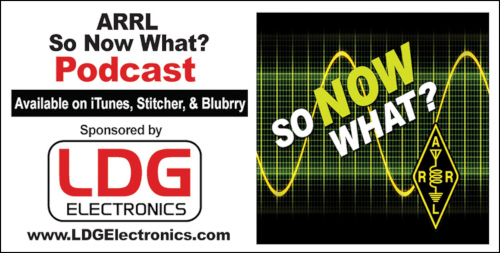 So Now What? is sponsored by
So Now What? is sponsored by 
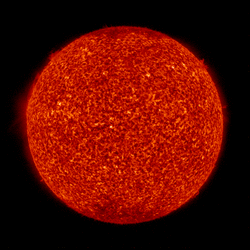 Predicted solar flux is 68 and 70 on May 2 - 3; 72 on May 4 - 5; 74 on May 6 - 9; 78 on May 10 - 16; 76, 72, and 70 on May 17 - 19; 69 on May 20 - 21; 68 on May 22; 67 on May 23 - June 2; 70 and 75 on June 3 - 4; 78 on June 5 - 12; 76, 72, and 70 on June 13 - 15.
Predicted solar flux is 68 and 70 on May 2 - 3; 72 on May 4 - 5; 74 on May 6 - 9; 78 on May 10 - 16; 76, 72, and 70 on May 17 - 19; 69 on May 20 - 21; 68 on May 22; 67 on May 23 - June 2; 70 and 75 on June 3 - 4; 78 on June 5 - 12; 76, 72, and 70 on June 13 - 15.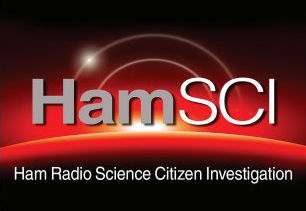 is also the 2019 ARRL National Convention. Their displays will be in Building 4 (Volta), which is between the food trucks and the flea market.
is also the 2019 ARRL National Convention. Their displays will be in Building 4 (Volta), which is between the food trucks and the flea market.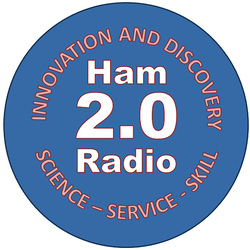 to a mini-booth staffed by members of the Young Amateurs Radio Club (
to a mini-booth staffed by members of the Young Amateurs Radio Club (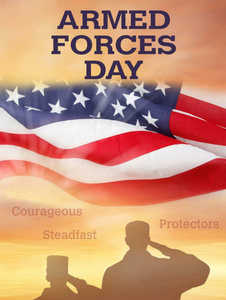 "For more than 50 years, military and amateur stations have taken part in this event, which is only an exercise scenario, designed to include hobbyist and government radio operators alike," the event announcement said. "The AFD Crossband Test is a unique opportunity to test two-way communications between military communicators and radio stations in the Amateur Radio Service, as authorized in 47 CFR 97.111. These tests provide opportunities and challenges for radio operators to demonstrate individual technical skills in a tightly-controlled exercise scenario that does not impact any public or private communications."
"For more than 50 years, military and amateur stations have taken part in this event, which is only an exercise scenario, designed to include hobbyist and government radio operators alike," the event announcement said. "The AFD Crossband Test is a unique opportunity to test two-way communications between military communicators and radio stations in the Amateur Radio Service, as authorized in 47 CFR 97.111. These tests provide opportunities and challenges for radio operators to demonstrate individual technical skills in a tightly-controlled exercise scenario that does not impact any public or private communications.".PNG) School Club Roundup (SCR) certificates are now available for the February 2019 event as well as for any future SCRs. Download these via the Certificate menu item on the
School Club Roundup (SCR) certificates are now available for the February 2019 event as well as for any future SCRs. Download these via the Certificate menu item on the 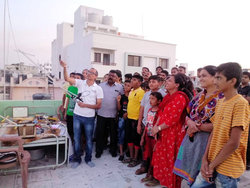 Some 50 students in Gujarat, India, on April 12 were introduced to Amateur Radio, satellites, and Amateur Radio on the International Space Station (
Some 50 students in Gujarat, India, on April 12 were introduced to Amateur Radio, satellites, and Amateur Radio on the International Space Station (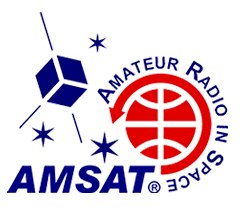 AMSAT Academy will take place on Thursday, May 16, the day before
AMSAT Academy will take place on Thursday, May 16, the day before 







